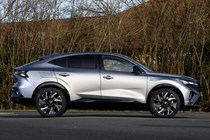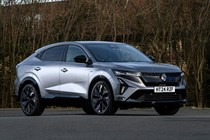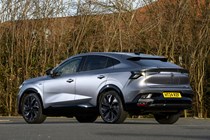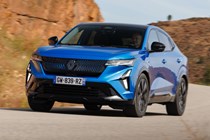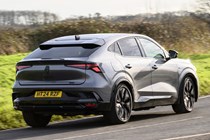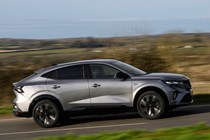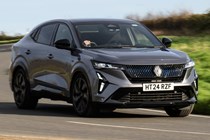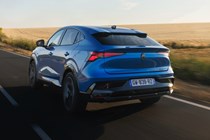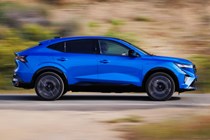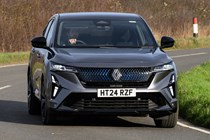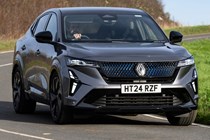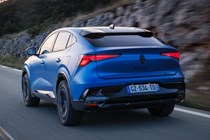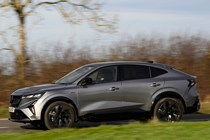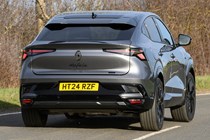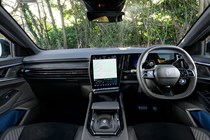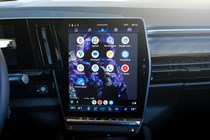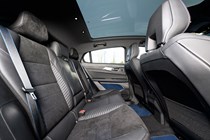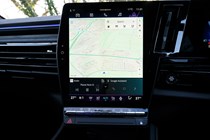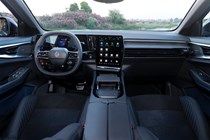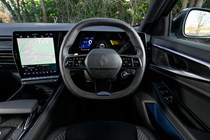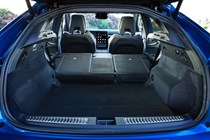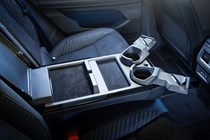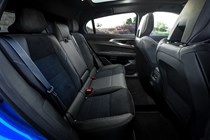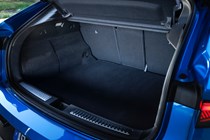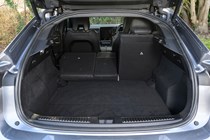
Renault Rafale review
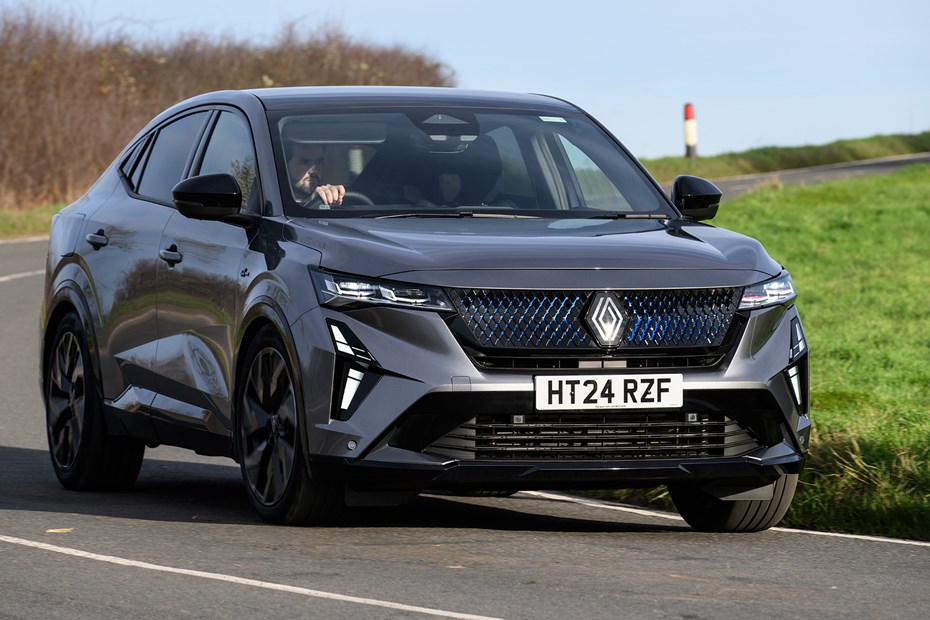
At a glance
| Price new | £38,195 - £49,695 |
|---|---|
| Used prices | £27,460 - £38,610 |
| Road tax cost | £195 - £620 |
| Insurance group | 29 - 39 |
Get an insurance quote with

|
|
| Fuel economy | 44.8 - 60.1 mpg |
| Miles per pound | 6.6 - 8.8 |
| Number of doors | 5 |
| View full specs for a specific version | |
Available fuel types
Hybrid
Pros & cons
- Spacious rear seats
- Attractive interior
- Decent plug-in hybrid EV range
- Stiff ride
- Inconsistent performance
- Nervous four-wheel steer
Overview
The Renault Rafale is a family coupe SUV at the top of Renault’s food chain. It’s currently the biggest and most expensive model built by the French manufacturer, coming in at 4.7 metres long and starting from just over £38,000.
But despite its length, the Rafale is strictly a five-seater, unlike key rivals such as the seven-seat Peugeot 5008 and Skoda Kodiaq. However, the Rafale’s sleek roofline brings to mind premium options like the BMW X4 and Mercedes GLC Coupe. Both are a similar length but cost a five-figure sum more, with the smaller BMW X2 more in the Rafale’s price bracket.
The success of the compact Arkana has shown there’s a real appetite for slinkily-shaped SUVs with appealing monthly costs, but as you climb through the trim grades, the Rafale becomes anything but cheap. Top trim grades surpass £50,000, which is premium money for a family car.
Prospective Rafale buyers have a couple of engines to choose from: a 200hp full-hybrid petrol or a 300hp plug-in hybrid petrol. Both units are exclusive to specific trims grades out of the five on offer. The 200hp full hybrid can only be spec’d with techno, techno esprit Alpine or iconic esprit Alpine trims while the 300hp plug-in hybrid can only be paired with techno esprit Alpine or a range-topping Atelier Alpine trim.
The Rafale does come generously equipped, however – even in base-spec techno trim. Included for the minimum sum, owners receive adaptive cruise control, a rear-view camera with front and rear parking assistance, and a 12” infotainment display with built-in Google, among other features.
Opting for the 300hp plug-in hybrid in techno esprit Alpine trim – the lowest on offer for this engine – will cost you £45,695, but four-wheel steering and matrix headlights are also thrown in along with plenty of other tech.
Does the Rafale offer enough to unseat some well-rounded opposition? Read on for the full Renault Rafale review from Parkers, or head over to our how we test cars page to find out how we reached our verdict.



